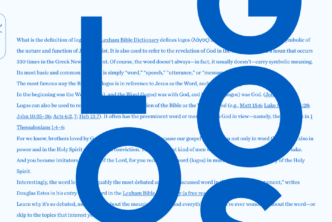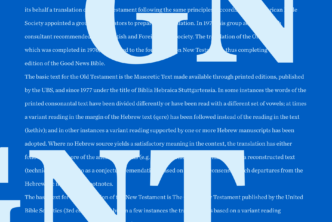The Bible is the foundational text for all Christians. We read it, study it, and hear sermons on it, but many Christians don’t think about how we got it. We take for granted the 66 books—39 in the Old Testament and 27 in the New—that make up our Bibles.
How did these individual books, written in three different languages to a variety of different audiences across several centuries, come together to form our Bible? And since we don’t have the Bible’s original manuscripts, how do we know the text of these books was transmitted accurately? Logos Mobile Education’s four-course Text of the Bible Bundle provides answers to these questions and more.
How we got the Old and New Testaments
In OT281 How We Got the Old Testament and NT281 How We Got the New Testament, Dr. Michael Heiser looks at the process by which we obtained the Hebrew Old Testament and Greek New Testament. He explains how writing developed in the ancient world and looks at how texts were composed and transmitted. He examines different textual traditions and demonstrates how to analyze variants of the different Greek or Hebrew manuscripts—a discipline known as textual criticism. Dr. Heiser also discusses the inspiration of the biblical text and the process of canonization. These two courses provide a thorough, yet easy-to-understand explanation of how the ancient manuscripts that preceded our Bible were created and passed down through history.
Watch these samples from Dr. Heiser’s courses in which he discusses evaluating variants in the Old Testament and gives examples of textual phenomena in the New Testament:
The reliability of New Testament manuscripts
In NT308 The Reliability of New Testament Manuscripts, Dr. Craig Evans answers the question: Can we trust the manuscript record of the New Testament? He looks at the quality, quantity, and age of different New Testament manuscripts and compares them with those of other ancient texts. He concludes, based on the textual evidence, that the New Testament manuscripts accurately reflect the originals.
In this video, Dr. Evans demonstrates the quality of New Testament manuscripts:
Introducing Bible translations
Of course, when most of us read the Bible, we don’t read it in Hebrew and Greek. In BI181 Introducing Bible Translations, Dr. Mark Strauss explains different translation philosophies behind the major English versions of the Bible. He describes the difficult nature of language, using examples from modern languages to illustrate how challenging it is to translate things like idioms and metaphors from one language to another.
In this clip, Dr. Strauss shows how words have a range of meanings:
These four courses will give you a better appreciation of the text of your Bible. You’ll come to understand the important and complicated process of transmitting ancient manuscripts and translating them into English.




